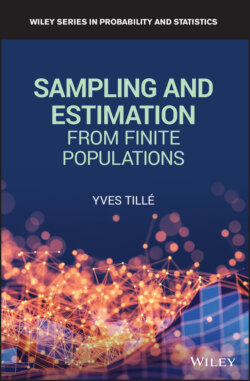Читать книгу Sampling and Estimation from Finite Populations - Yves Tille - Страница 28
2.3 Inclusion Probabilities
ОглавлениеThe inclusion probability is the probability that unit is selected in the sample. This probability is, in theory, derived from the sampling design:
for all . In sampling designs without replacement, the random variables have Bernoulli distributions with parameter There is no particular reason to select units with equal probabilities. However, it will be seen below that it is important that all inclusion probabilities be nonzero.
The second‐order inclusion probability (or joint inclusion probability) is the probability that units and are selected together in the sample:
for all In sampling designs without replacement, when , the second‐order inclusion probability is reduced to the first‐order inclusion probability, in other words for all
The variance of the indicator variable is denoted by
which is the variance of a Bernoulli variable. The covariances between indicators are
One can also use a matrix notation. Let
be a column vector. The vector of inclusion probabilities is
Define also the symmetric matrix:
and the variance–covariance matrix
Matrix is a variance–covariance matrix which is therefore semi‐definite positive.
